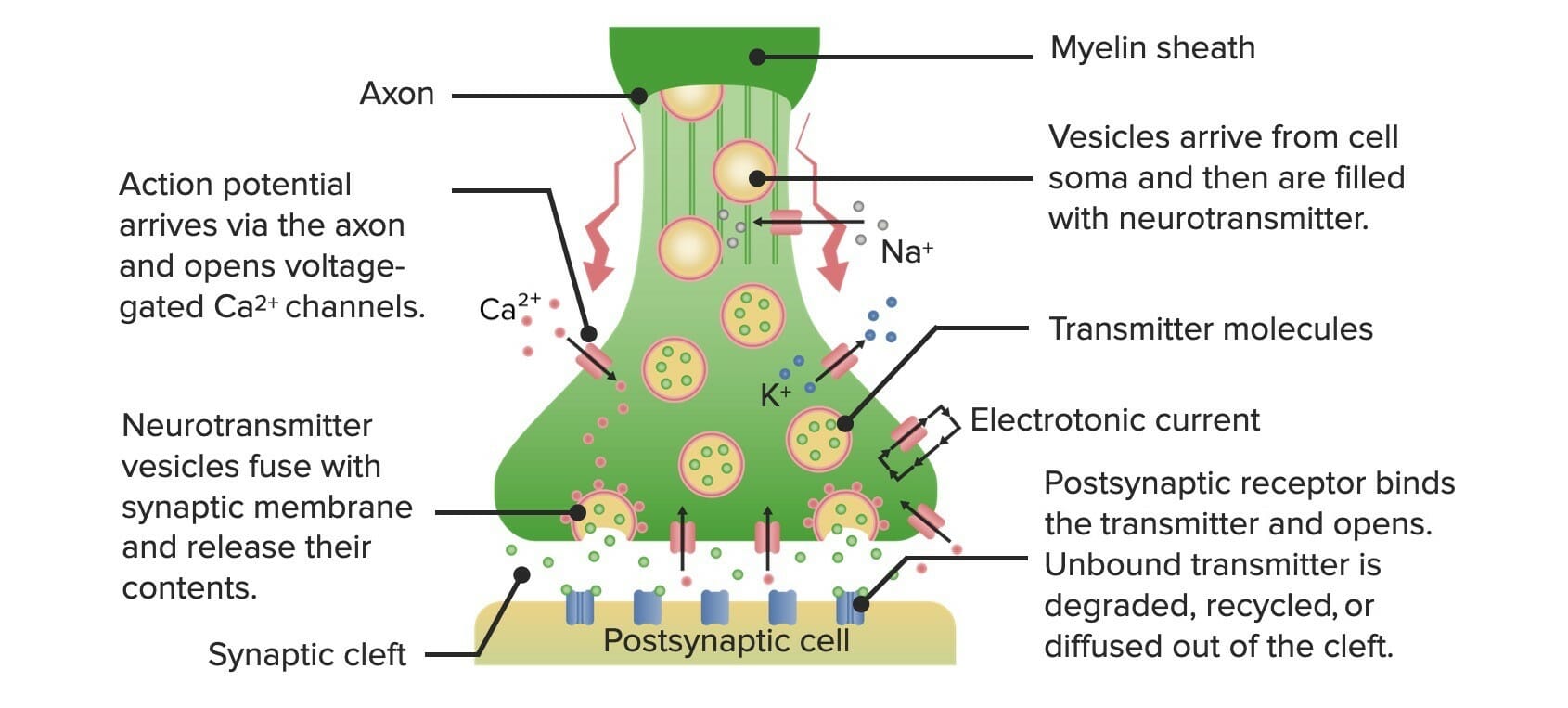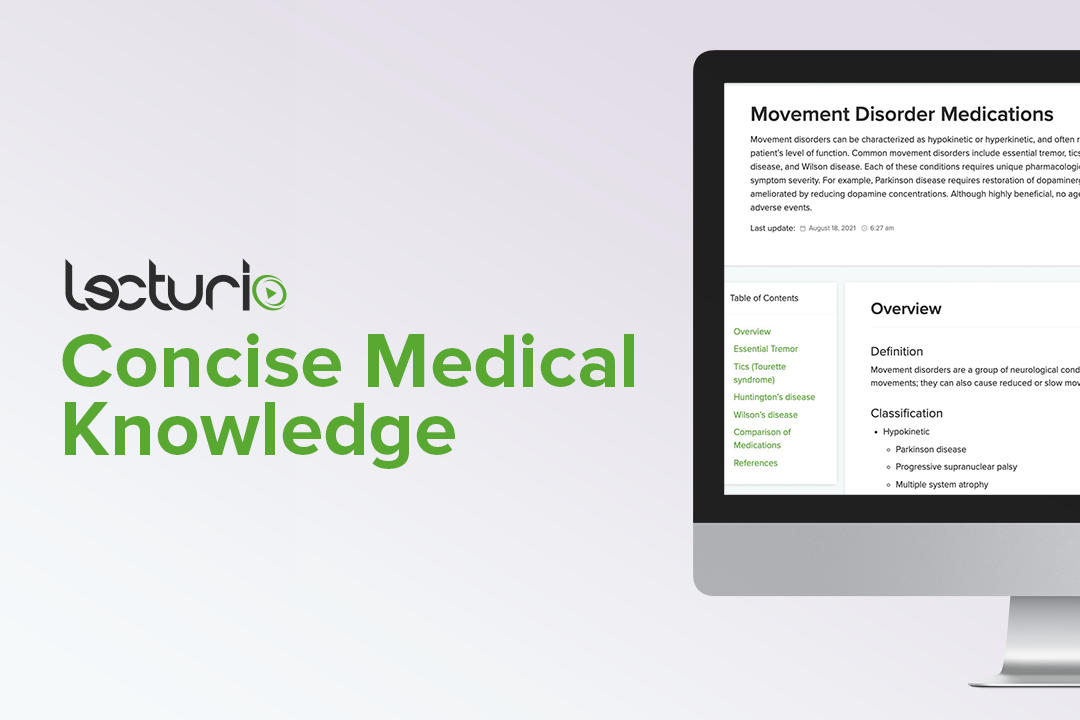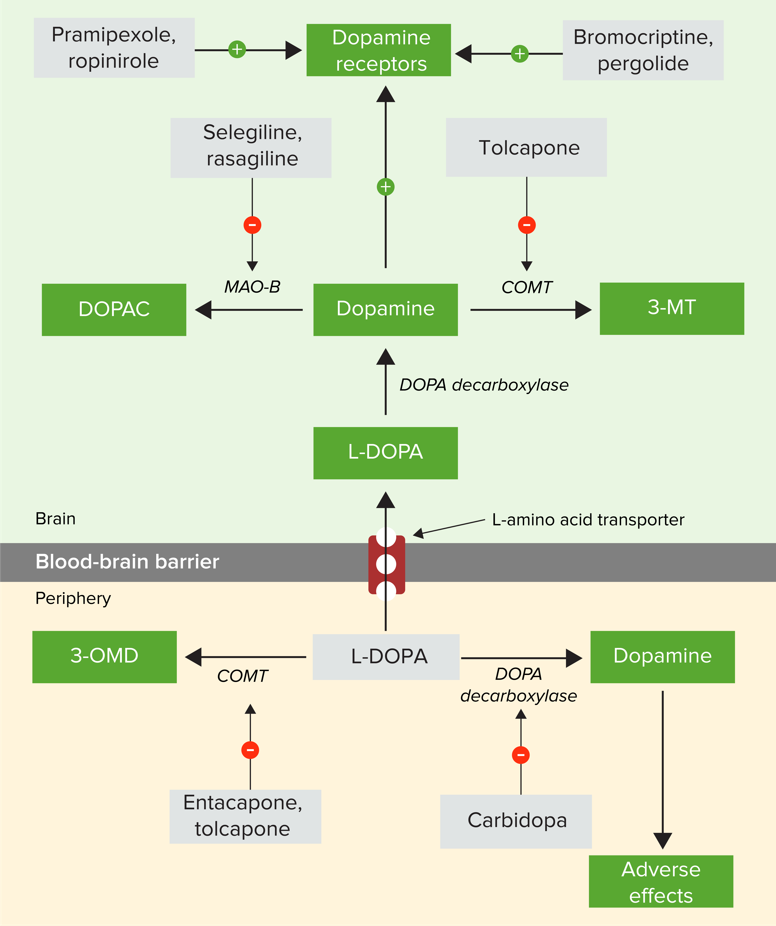Playlist
Show Playlist
Hide Playlist
Dopamine Hypothesis – Medication of Movement Disorders
-
Slides Parkinson Disease and other Movement Disorders CNS Pharmacology.pdf
-
Download Lecture Overview
00:01 Hi, I’m Doctor Shukle. We’re going to cover pharmacology of Parkinson’s disease in this lecture. 00:07 Let’s go over some basics of the dopamine hypothesis in the treatment of disease. 00:12 Now, we know that there’s an association of reduced dopamine activity and dopamine levels in patients who have Parkinson’s disease. 00:21 So, by increasing the amount of dopamine in those areas, we treat Parkinson’s disease and we make the symptoms less obvious. 00:30 Unfortunately, when we increase the amount of dopamine, we also increase the risk of schizophrenia and other psychosis type behaviors but in order to treat those psychosis behaviors, we have to reduce the amount of dopamine in the brain and of course, you have a cycle. 00:47 So, you can see that dopamine is integral to the disease process of both Parkinson’s disease and schizophrenia and psychosis, so, we have to strike a balance between the side effects of our medications in both classes of illnesses and the beneficial effects of both classes of drugs. 01:07 What we’re going to look at is just how these drugs are used to treat both Parkinson’s disease and the dyskinesias or hypokinesias by reducing the levels of dopamine or rate of dopamine transmission. 01:21 We also will look at the way that these drugs are used to treat psychoses and hyperactivity by increasing the levels of dopamine or dopamine transmission. 01:31 In order to understand that, we’ll take a look at all of these drugs and see how they work in individuality. 01:38 Now, one thing that I wanna go over is how these drugs are working at the level of the brain. 01:44 So, let’s take a look at my brain diagram. We have four major pathways that I want to talk about. 01:51 First, is the nigrostriatal tract. 01:54 There are extra parametal cells there that result in what we call extraparametal function and by increasing the amount of dopamine in this region, you improve Parkinsonian symptoms. 02:05 We have the mesocortical and mesolimbic tracts. The mesocortical tract is associated with apathy and lack of emotion and the mesolimbic tract is associated with hallucinations and delusions. 02:19 We also have the tuberoinfundibular tract. 02:22 You can have more inhibition of prolactin release by increasing your dopamine levels and change the levels of prolactin that you have. 02:32 Finally, you have something called the chemoreceptor trigger zone or chemoreceptor zone. 02:36 It’s also abbreviated to CTZ, so, if you ever see CTZ, this is what we’re talking about. 02:43 This is the vomiting center of the brain. It’s associated by - with increasing anorexia, nausea, and vomiting.
About the Lecture
The lecture Dopamine Hypothesis – Medication of Movement Disorders by Pravin Shukle, MD is from the course CNS - Pharmacology.
Included Quiz Questions
What is true regarding the dopamine hypothesis of schizophrenia?
- Positive symptoms are caused by hyperactive dopaminergic signal transduction.
- Negative symptoms are caused by hyperactive dopaminergic signal transduction.
- Positive symptoms are caused by the depleted dopaminergic signal transduction.
- Positive symptoms are not related to dopaminergic signal transduction.
Which dopamine pathway is associated with hallucinations in schizophrenia?
- Mesolimbic tract
- Mesocortical tract
- Tuberoinfundibular tract
- Nigrostriatal tract
- Chemoreceptor zone
Customer reviews
5,0 of 5 stars
| 5 Stars |
|
5 |
| 4 Stars |
|
0 |
| 3 Stars |
|
0 |
| 2 Stars |
|
0 |
| 1 Star |
|
0 |







